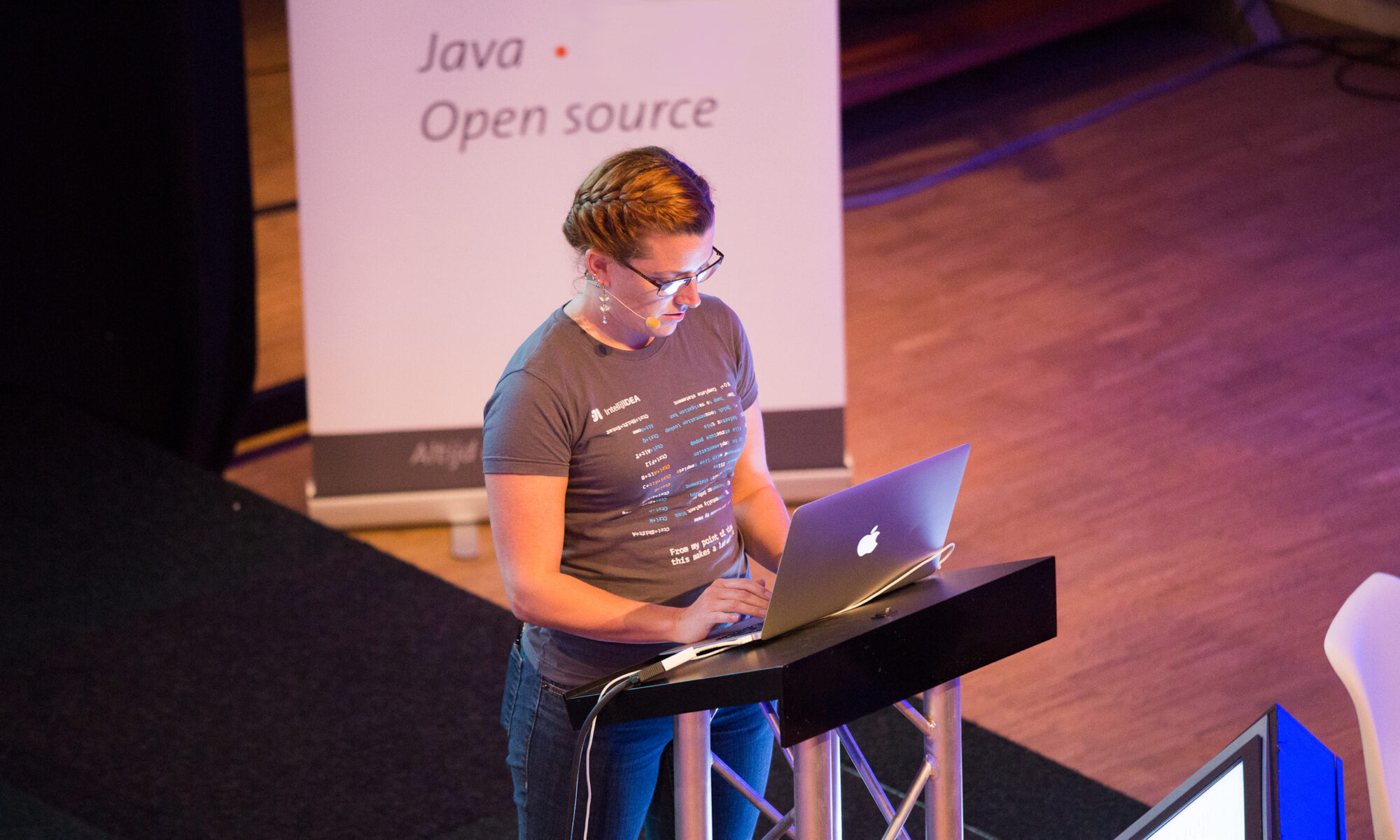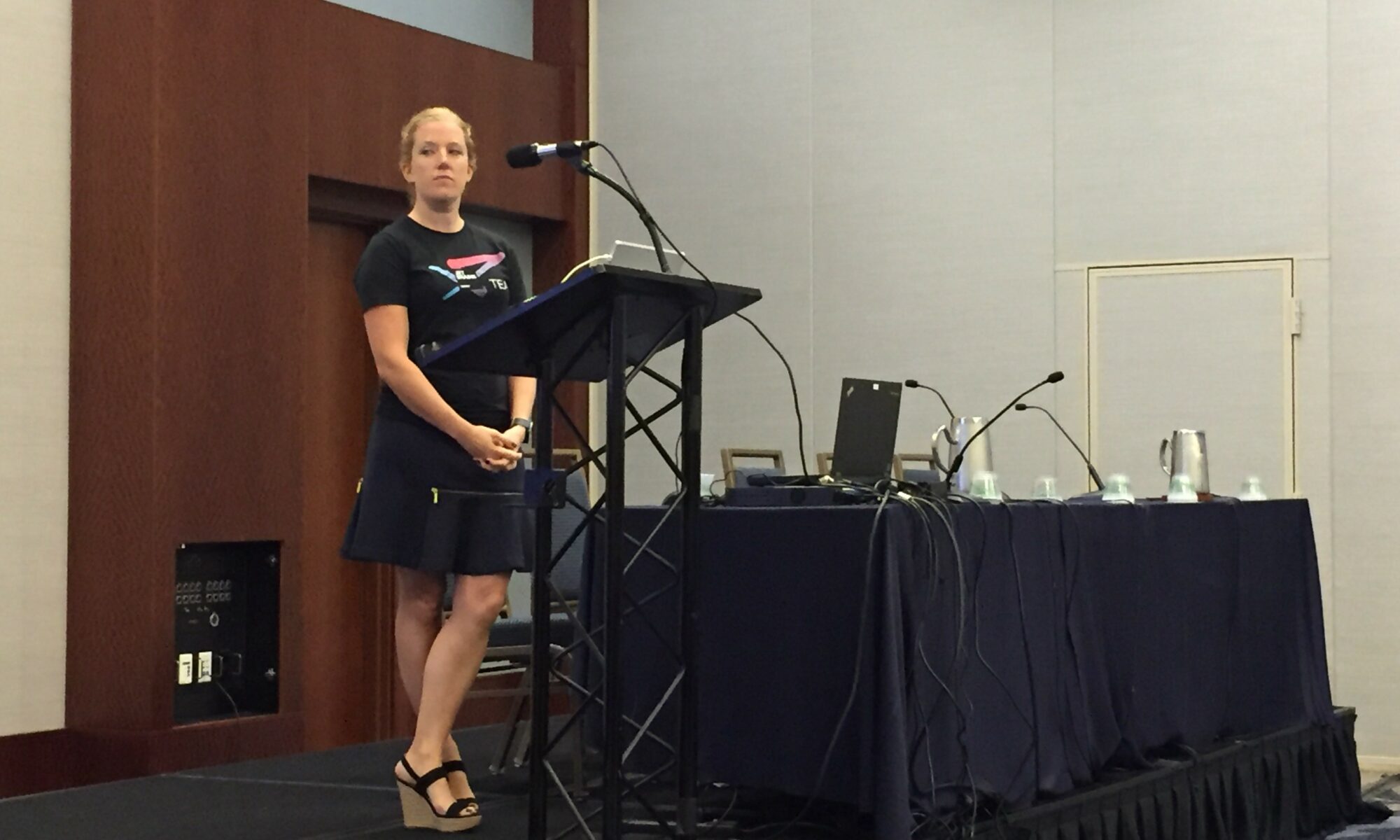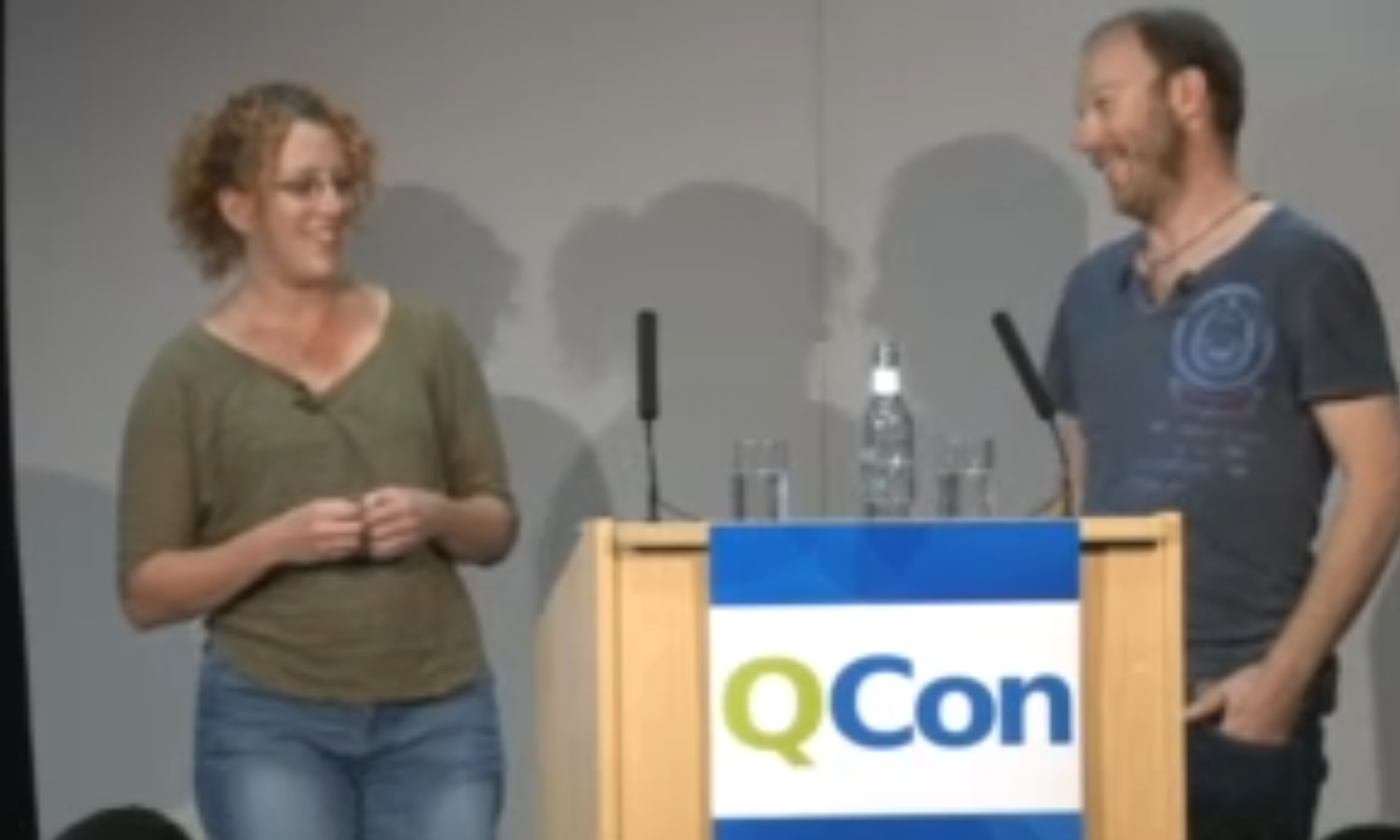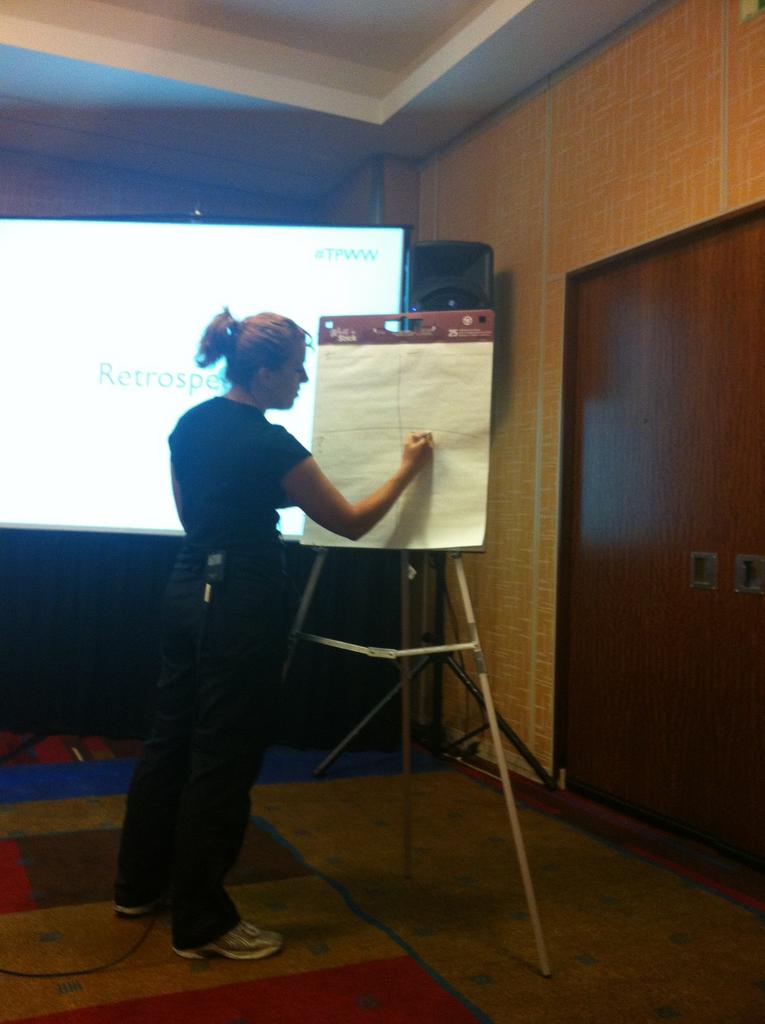Off the back of yesterday’s post, I received a number of comments and questions around blind CFPs (Call For Papers - usually to get into a conference you submit to a CFP) for conferences. I often hear it said that a blind CFP will fix, or at least improve, the diversity imbalance at conferences.
I don’t believe this.
Firstly, I should caveat this with: this is going to be a blog post based on my experiences and chats with people, and I have zero science to back this up. Sorry. But I do have some numbers.
There are a couple of London conferences that I won’t name (because I haven’t asked their permission not because they’ve done anything wrong) that in some years have received only 2 from around 200 (or more) submissions from women. These conferences have accepted 100% of the submissions from women, and then been open to criticism for not having enough women speakers.
A blind CFP to remove unconscious bias from the selection committee might have resulted in zero women speakers.
Now I know the next argument is that advertising a blind CFP might encourage a wider diversity of speakers to apply. This does seem to work in some parts of the industry (I’ve been talking to women from tech scenes that don’t intersect with mine and I’m starting to see that we have different problems in different segments of the wider development world). But for my world, which is largely Java, with some forays into Agile, NoSQL, Open Source, and Enterprise, the women I speak to aren’t scared they’ll be discriminated against if they put their name on a CFP. Besides, they don’t have anything to lose by submitting and being rejected. They’re more afraid they’ll be accepted, and then they’ll have to give a presentation! No, the women I’ve spoken to in my world don’t submit because they don’t feel ready, they don’t think they have anything to talk about, and they’re worried about the sorts of questions they’ll get asked when they’re standing up there. Those fears aren’t allayed by having a blind CFP.
If there are any fears of being judged as a woman, it’s when we’re standing up in front of people at the conference, and no amount of blindness during the CFP process is going to make us feel better about that.
For me, personally, I find the idea of a blind CFP terrifying:
- Firstly, if you have such a problem with judging people based on race or gender that you have to anonymise the selection process, I’m not sure I want to speak at your conference where my gender will be blatantly on show.
- Secondly, when I was starting out as a speaker, I was new to writing titles and abstracts and expected that they would not be good enough to get in. With a blind CFP I would never find out why as I could never ask for feedback on my anonymous abstract. As a novice speaker, I expected my gender would help me be selected, not hinder.
- Thirdly, as an experienced speaker I know my abstract-writing has not really improved, but I know my presenting has, and I know there are videos of me out there doing a good job as a presenter, this is my audition tape.
When I was starting out as a speaker, I knew there weren’t enough women presenters around. And although I hate the idea of positive discrimination and hate the idea that men might think I got into my position merely because I’m female, I knew that being a woman made me stand out in all those submissions. And I knew that enough conferences would take a chance on me, if only to improve their diversity, and that’s all I needed to bootstrap my speaking career - once I had spoken at enough conferences, once I had videos of me doing that, I would find it much easier to get into the next conferences. And that’s worked. And now, as an experienced (female) speaker, I fear blind CFPs as they won’t know who I am or what I’m capable of.
So that’s my opinion as a female speaker. But I’ve also been fortunate enough to be on the programme committee for a couple of conferences, and after three years or so of speaking at conferences I know a lot of conference organisers. Let’s assume you’re “merely” trying to build the best conference you can around your subject whilst not discriminating against anyone (i.e. let’s assume you’re not going out of your way to actively promote diversity). How can you do this when you only have abstracts and titles to go on?
I am aware of the studies around blind auditions for orchestras. And I understand how tempting it is to try to apply that to our world, since it has had an effect on the number of women in orchestras (but let’s not get too excited here, we’re talking about an increase from 5% to 25% over thirty years…). I think blind auditions would work really well for coding - we can look at just the code, without knowing anything about the physical body behind the code, and figure out if that person is good enough for us. We could even do blind pair programming, using screen sharing and chat (actually that’s a great idea, I think I’ll patent that!). Because the thing you’ve anonymised (the code) is the output you really care about in a programming job. If you communicate via chat you can even measure someone’s communication skills without judging them physically, another vital skill for being part of a team.
But a talk abstract is not the output we’re looking for. Sure, a good title and abstract will attract attendees to the conference and bums on seats in the actual talk. But the output you’re looking for is the presenter - their style, their approach to the topic, their ability to hold attention, their ability to impart information. We’re not always looking for the same things either, an interesting topic presented nervously but logically is fine, as is an entertaining presenter reminding us of fundamentals we already know (and any other combination of strengths and weaknesses). An abstract can’t tell you how good the presentation is going to be. Evaluating a presentation on a blind abstract would be like evaluating those musicians on a couple of paragraphs explaining what they’re going to play and how they’re going to try to make you feel when they play it - the words could sound great, but the musician might not even be able to play the instrument.
The best audition you can have as a presenter is to, well, present. Videos, audio clips, even screencasts. But the problem with presenting is that it’s so freaking obvious that you’re a woman (or other variation on non-white-straight-male). If you can’t objectively evaluate a presentation without taking away the presenter’s physical body (for colour or gender or whatever), then you’ve got real problems. Your audience is going to be faced with that physical body for an hour of their life, and you can bet they’ll be judging them too. You want to be damned sure that you’ve selected a competent presenter, and you’ll need to stand by that choice. Saying “oh, well, they didn’t seem boring in their abstract” is not going to make the audience feel like you did a good job of the selection.
There’s another point about non-blind selection processes, other than the process allowing you to select on presentation ability rather than abstract-writing ability: you can be more active in promoting diversity. I am against “affirmative action”, but if the proportion of women submitting presentations is lower than the proportion of women in the field, there’s something missing. Here are some of the things you can do if you identify a lack of a certain demographic - as usual, I’m going to use “women”, but you could equally argue this for any demographic, even not-enough-C#-developers or too-many-startups-not-enough-enterprise:
- Reach out to relevant user groups and communities asking them to submit. In London for example, there’s Ladies Who Code, Women Who Code, Girl Geek Dinners, PyLadies, Rails Girls, Women in Data, Girl Geek Meetup, Women in Games Jobs, Girls in Tech, Girl Geeks Unite, and a whole host of women techies meetups … And don’t think I psychically know about all those because I have two X chromosomes, I found half of those just now, in less than two minutes, by Googling “Girl Geeks London” and “Women Tech London”
- Put the faces of the women you do want to have speak (or the women on your programme committee, or both) on your website - showing these women sends the message that this conference is for women. It should also impact the diversity of your attendees.
- Reach out to specific women speakers and ask them to present. I’ve talked about this before, women speakers are few and far between, and a) they get booked in advance and b) are busy enough not to have to (or want to) submit via a CFP process.
- There are more ideas here
And there’s more - you don’t just have to drain the pool dry of known competent speakers-who-tick-some-diversity-box. With a non-blind process you can actively improve the submissions you do have, assuming you’re not one of the conferences suffering from a complete lack of submissions from those people. For example, if you’re looking to increase the number of women presenting at your conference, if you have women submitting but they don’t quite meet your criteria (maybe the abstract is weak, the title isn’t catchy, or maybe the presenter simply isn’t quite ready yet) you, as the conference organiser, are in the perfect position to mentor these people: you can help them re-write their abstracts; you can offer them mentoring and training for presenting. If there’s no record of them presenting but you’re interested in evaluating their ability, you can set them up with a user group to present at - as a conference organiser, you have the network contacts that new speakers might not. You can run sessions aimed at people who have never done public speaking (I’ve run a session like this four times now, at the LJC and at Ladies Who Code - I had over 70 RSVPs for the last London Ladies Who Code session, twice the number of the last LJC session, so there are plenty of women interested in breaking into this field, who are looking for training, who don’t feel ready to present yet).
So, what are my points?
-
A blind process of selection can be applied to something where the output you’re selecting for can be effectively anonymised: music auditions, code, technical writing, etc.
-
A blind process where you select based on criteria that are not the end result will only be effective if it’s the selection process is biased, or if submissions to the selection process are lower from discriminated-against-groups because they fear a biased selection process.
-
For those conferences that are getting very tiny numbers of submissions from women (I’m picking women as the example but you can pick any group you want), a blind process could lead to even fewer selected women speakers. Instead of switching to a blind process, you’re probably going to want to check:
- the messaging around your conference (remember masculine words like rock star, ninja, competitive, hardcore, challenging etc put women off applying to jobs, the same probably applies to technical conferences)
- subliminal messages on your website/info (one of the conferences I mentioned, for example, sent out a couple of emails containing photos of previous years’ conferences which happened to only show men - this was not even representative of the conference, but it can have an unexpectedly big effect on the subconscious)
- have you showcased the diversity of the conference, or previous years’ conferences, with photos, interviews, testamonials?
-
A non-blind submission process allows you to be more active in promoting diversity - instead of hoping that the submissions are representative of the diversity in your community, and that selecting the most interesting talks will naturally lead to improved diversity, with a non-blind process you can track exactly how many women are submitting, address problems in this area early and offer mentoring to those who aren’t quite ready yet. Remember that women only apply for jobs they feel 100% qualified for and take fewer chances, they might need that extra push.
So, no. I don’t believe that implementing a blind CFP will address the lack of diversity in conference speakers. I know it helps in some circles, but I personally think that conference selection committees should a) be much better at identifying their own biases and actively attempting to overcome them b) be active in improving the diversity of their conference, and c) be offering feedback and mentoring to those who are not quite ready yet in order to improve the overall ecosystem.
Diversity isn’t going to accidentally happen when we stop looking at gender and race and other visible you-don’t-belong-here cues. Diversity is only going to happen if people fight for it, and if we actively train, mentor, and support those trying to break through the barriers.
Postscript
I wrote a follow up based off responses to this post, covering additional questions raised.
